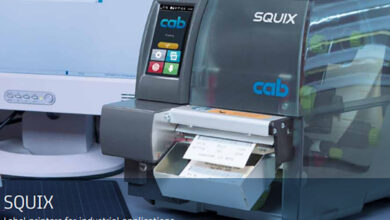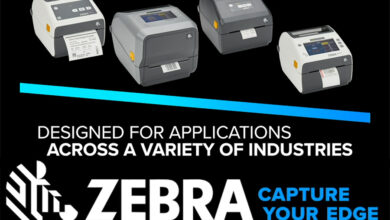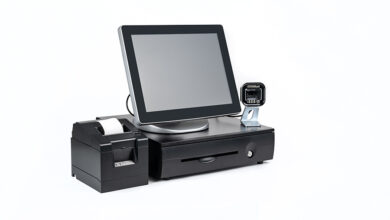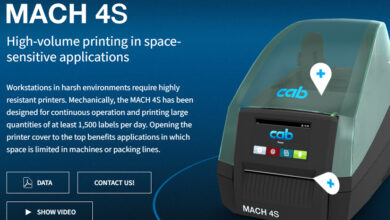What Are Thermal Transfer Printers

What Are Thermal Transfer Printers?
A thermal transfer printer is a machine used to make labels, price tags, tickets, or any other paper-based items. The term “thermal” indicates that such a machine uses heat to register an impression on the printing material. Let’s have a look at how a thermal transfer printer works.
Main Characteristics of a Thermal Transfer Printer
 A commercial-grade thermal transfer printer looks very much like a piece of modern office equipment. On the outside, it’s not that different from a regular printer. However, there’s a big difference between regular printers and thermal transfer printers. The former use ink cartridges to do their job, while thermal ones use heat and special ribbons.
A commercial-grade thermal transfer printer looks very much like a piece of modern office equipment. On the outside, it’s not that different from a regular printer. However, there’s a big difference between regular printers and thermal transfer printers. The former use ink cartridges to do their job, while thermal ones use heat and special ribbons.
To understand how such a machine works, think of the old mechanical typewriters. Those were equipped with a ribbon steeped in ink. When typing, the character was impressed on the page by the force of each character bar pressing on the ribbon.
Thermal transfer printers also use rolls of ribbon, but instead of ink, these are coated with a wax or a resin formulation. When you want to print a label, instead of mechanical force you use the heat generated by the print head.
The wax-coated ribbon is sandwiched between the print head and the printing paper.
How Does a Print Head Work?
The print head is the most important part of the thermal transfer printer. A print head has many small needles or pins.
When a label comes in front of the print head, each of these pins heats up. The heat each pin generates will melt a small part of the wax on the ribbon and the wax will be absorbed by the paper.
Just like any printer, a thermal transfer one has a complex mechanism that allows it to analyze the image that needs to be printed. To recreate that image on paper, the machine uses microprocessors to dictate to the pins to heat up accordingly.
What Sort of Labels Can You Print Using Thermal Transfer?
Thermal transfer printers can be used to make monochrome or multicoloured labels. That depends on the type of ribbon used. That’s a clear advantage over direct thermal printers, which can only print black and white labels.
You can change the ribbons as often as you need to, just make sure to clean the print head with isopropyl alcohol. This is just a precaution as the way ribbons are made makes it impossible for the wax to stain the print head.
Thermal transfer printers come with various resolutions, varying from 203 dpi to 600 dpi.
The dimensions of the labels depend on the settings used. Technically, the print head is wide enough to cover the entire width of the printing substrate, so you can have the lines making up a barcode as long as you need them.
What Is the Quality Of Thermal Transfer Labels?
 Labels made with a thermal transfer printer are considered to be better than those made using a direct thermal printer, which does not use a ribbon.
Labels made with a thermal transfer printer are considered to be better than those made using a direct thermal printer, which does not use a ribbon.
Thermal transfer labels have very crisp images and a very long shelf-life. Since the wax is absorbed into the paper under heat it will not rub off. Nor will it fade under exposure to the elements or direct sunlight. The moment the label comes out of the printer, the image is completely dry, which prevents smudging or smearing.
A thermal transfer label can easily be read with a scanner even after six months, which is not the case with direct thermal labels.
Final Thoughts
Thermal transfer printers are used to produce high-quality labels with long-life image stability. The quality of the printed image depends on using the right ribbon and printing material. The higher the resolution of the printer, the better the print quality.
Thermal Transfer Printer Manufacturers
- Brother – Print the volumes of barcodes and durable labels your operation needs with day-and-night performance, refreshingly easy integrations, and ultra-fast speeds.
- Honeywell – Durable printers that can deliver around-the-clock performance.
- Sato – SATO’s Industrial barcode printers are the hallmark of printing products for harsh environments and applications.
- Toshiba – Toshiba’s long-lasting print heads provide a low total cost of operation with minimal maintenance.
- Zebra – Print with confidence knowing you have a partner with 50 years of thermal printing innovation by your side.




